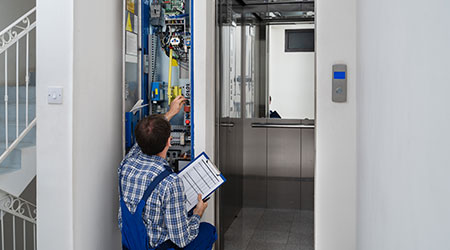In the contemporary architectural landscape, the integration of green technologies and sustainable practices in elevator design has emerged as a pivotal area of innovation. This surge in environmentally conscious design is not only a response to global demands for energy efficiency and reduced carbon footprints but also a reflection of the elevator industry’s commitment to sustainability. This article explores the cutting-edge advancements and sustainable practices that are setting new standards for elevator efficiency, showcasing how these innovations are contributing to the development of greener buildings and urban environments.
Elevator Efficiency: A Cornerstone of Sustainable Architecture
Elevators are essential components of high-rise buildings, yet their operation accounts for a significant portion of a building’s energy consumption. The quest for sustainability in the elevator industry revolves around reducing this energy demand while enhancing the performance and reliability of elevator systems. Innovations in this domain are not only redefining the efficiency of vertical transportation but are also playing a crucial role in the broader context of sustainable architectural design. By integrating advanced green technologies, architects and developers can significantly lower a building’s operational costs and environmental impact, contributing to the creation of more sustainable urban habitats.
Technological Advancements Driving Elevator Sustainability
Regenerative Drive Systems
One of the most transformative technologies in the realm of elevator efficiency is the regenerative drive system. Unlike traditional systems that dissipate the energy generated during the elevator’s descent and braking as heat, regenerative drives capture this energy and feed it back into the building’s power grid. This technology not only reduces the overall energy consumption of elevator operations but also contributes to the building’s energy efficiency by providing supplemental power. The adoption of regenerative drive systems is a testament to the elevator industry’s innovation in harnessing energy that would otherwise be wasted.
Gearless Traction Elevators
Gearless traction elevators represent another leap forward in enhancing elevator efficiency. By employing a gearless traction system, these elevators use less energy compared to conventional geared systems. The reduced mechanical complexity of gearless elevators also results in smoother rides, lower maintenance requirements, and longer lifespans, further contributing to their sustainable appeal. Moreover, the compact design of the gearless machinery allows for more efficient use of building space, enabling architects to design more flexible and energy-efficient buildings.
Machine Room-Less (MRL) Technology
The advent of Machine Room-Less (MRL) technology has marked a significant milestone in elevator design, eliminating the need for a separate machine room. This innovation not only saves valuable building space but also reduces construction materials and energy consumption. MRL elevators are designed to be more energy-efficient, utilizing smaller, more efficient motors that contribute to the overall sustainability of the building. The integration of MRL technology into elevator systems is a prime example of how the industry is moving towards more space-efficient and environmentally friendly solutions.
Advanced Control Systems
Advanced elevator control systems, employing algorithms and artificial intelligence, optimize elevator routing and operation to minimize energy use and waiting times. These smart systems analyze real-time traffic patterns within a building to dispatch elevators more efficiently, reducing unnecessary trips and energy consumption. The incorporation of such intelligent control systems into elevator designs is a key factor in achieving higher levels of energy efficiency and operational effectiveness, aligning with the goals of sustainable building practices.
Sustainable Materials and Manufacturing Processes
In addition to technological innovations, the elevator industry is also focusing on sustainable materials and manufacturing processes. The use of recycled materials, low-impact manufacturing techniques, and lifecycle assessments are becoming increasingly prevalent in the production of elevators. These practices not only reduce the environmental impact of elevator manufacturing but also promote sustainability throughout the entire lifecycle of the elevator, from production to disposal. The shift towards greener materials and more sustainable manufacturing processes reflects the industry’s commitment to environmental stewardship and sustainable development.
Elevators as Contributors to Green Building Certifications
Elevators equipped with green technologies and designed according to sustainable practices play a significant role in helping buildings achieve green certification standards such as LEED (Leadership in Energy and Environmental Design) or BREEAM (Building Research Establishment Environmental Assessment Method). The energy efficiency and sustainability features of modern elevator systems can contribute to a building’s overall environmental performance, enhancing its eligibility for certifications that recognize and reward green building practices. This alignment with green building standards further underscores the importance of sustainable elevator design in the broader context of environmental sustainability and responsible urban development.
The Future of Sustainable Elevator Design
As the elevator industry continues to innovate, the future of elevator design promises even greater advancements in efficiency and sustainability. Emerging technologies, such as solar-powered elevators and the use of cutting-edge materials with even lower environmental footprints, are on the horizon. These developments, coupled with a growing emphasis on holistic, sustainable building designs, indicate that elevators will continue to play a crucial role in the evolution of green architecture. By prioritizing energy efficiency, sustainability, and environmental responsibility, the elevator industry is not only enhancing the functionality and performance of its systems but is also contributing to the global pursuit of more sustainable and livable urban environments.
Lifecycle Assessments in Elevator Design
Sustainable elevator design extends beyond the immediate considerations of energy consumption and material selection; it encompasses the entire lifecycle of the elevator, from manufacturing and installation to operation and end-of-life disposal. Lifecycle assessments (LCAs) are critical in evaluating the environmental impact of elevators over their lifespan. By conducting LCAs, manufacturers and designers can identify areas where improvements can be made to reduce carbon footprints, enhance energy efficiency, and minimize waste. This holistic approach ensures that sustainability is embedded in every phase of the elevator’s lifecycle, promoting a more sustainable construction ecosystem.
Elevators and Smart Urban Mobility
As urban populations continue to grow, the challenge of vertical and horizontal mobility within dense urban environments becomes increasingly complex. Elevators, traditionally seen as mere vertical transportation solutions, are now being reimagined as integral components of a smart urban mobility framework. Innovations such as ropeless elevators and multi-directional lift systems herald a new era of urban transportation, where elevators can move both vertically and horizontally. These advancements not only expand the possibilities for building design but also contribute to the development of more efficient and sustainable urban mobility systems. Elevators, in this context, become key enablers of smart, connected, and sustainable cities.
The Path Forward: Elevators as Catalysts for Sustainability
The future of elevator design is intrinsically linked to the global imperative for sustainability. As the elevator industry continues to embrace green technologies, sustainable practices, and digital innovations, its role in shaping sustainable urban landscapes becomes more pronounced. Collaboration among architects, engineers, urban planners, and technology developers is essential to harness the full potential of these innovations. By fostering a culture of sustainability and innovation, the elevator industry can contribute significantly to achieving energy efficiency, reducing carbon emissions, and promoting sustainable urban development.
The journey towards more sustainable elevator designs is an ongoing process, driven by technological advancements, regulatory changes, and a growing awareness of environmental issues. As we look to the future, the elevator industry’s commitment to sustainability offers a promising pathway towards greener buildings, smarter cities, and a more sustainable world. Through continuous innovation and collaboration, elevators will not only elevate us physically but also uplift our collective aspirations for a sustainable future.



